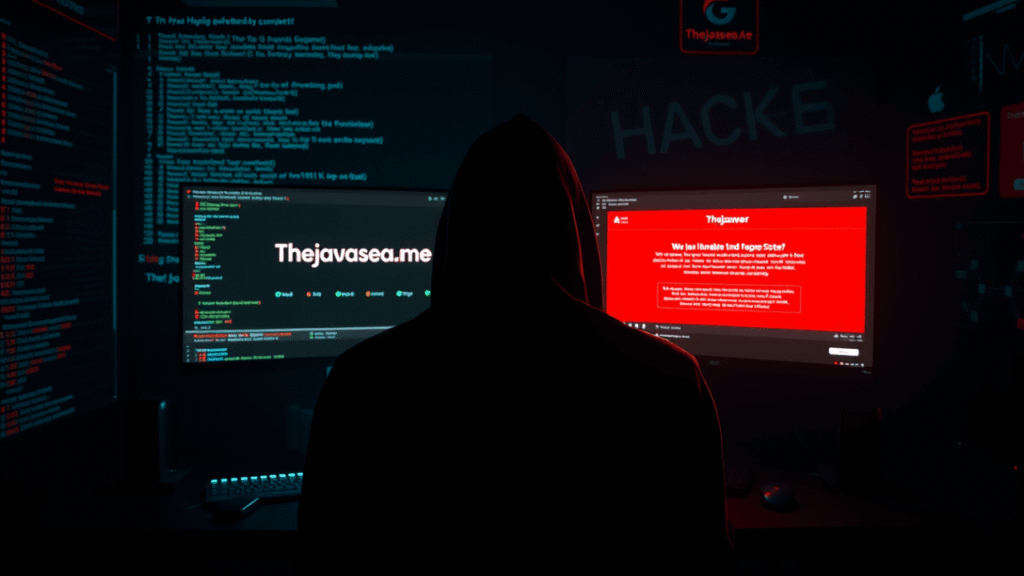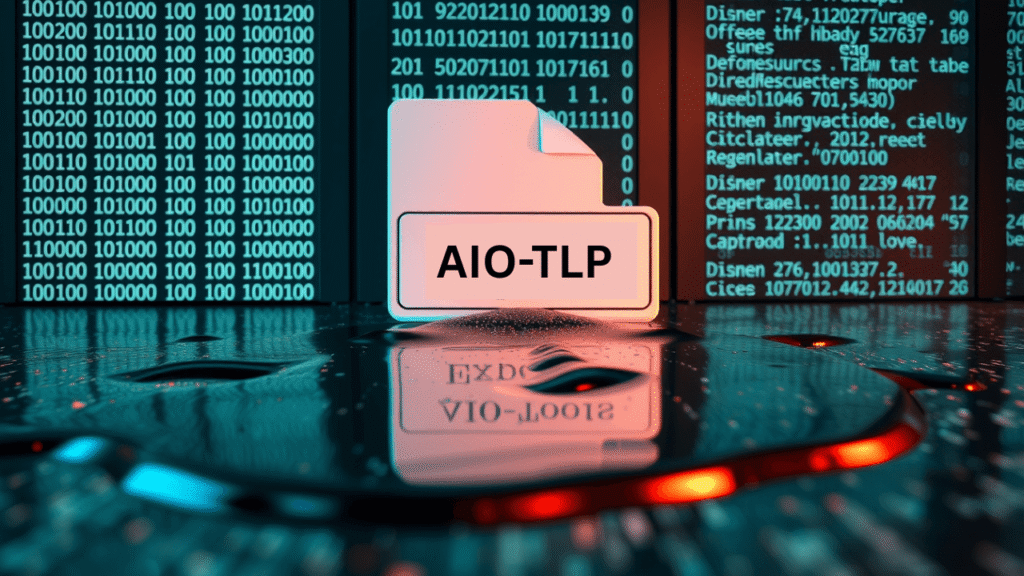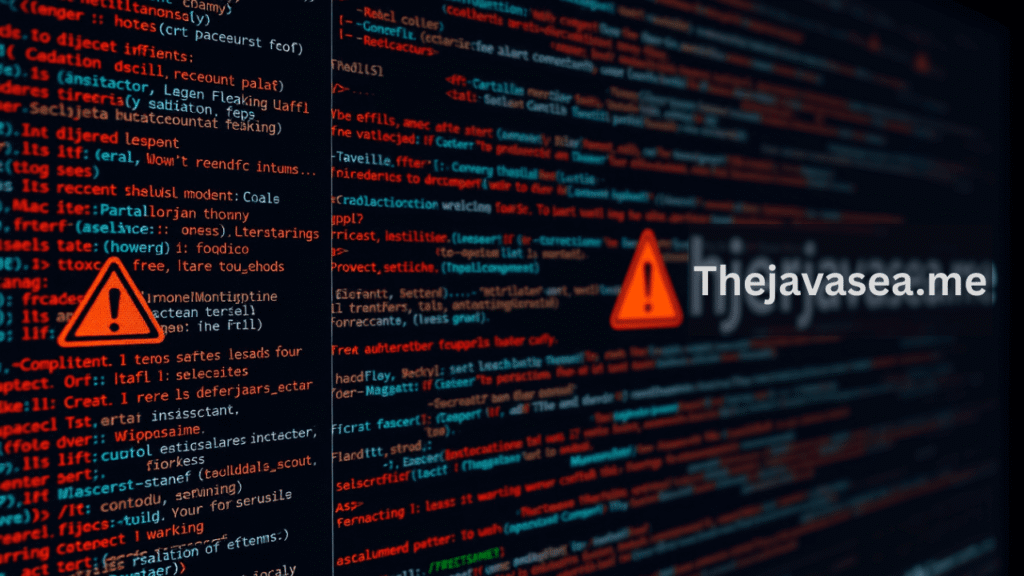One of the most talked-about recent incidents is the Thejavasea.me AIO-TLP leak. This blog covers everything you need to know about the leak—what AIO-TLP is, how it was exposed, why it matters, and how you can protect yourself. This blog will also explore the broader implications of leaks like this on global cybersecurity, digital privacy, and the underground internet.
Understanding the Basics of the Leak
Before diving into details, let’s understand the core elements of this incident: what is Thejavasea.me and what does AIO-TLP mean?
What Is Thejavasea.me?

Thejavasea.me is a file-sharing and leak site that gained notoriety for hosting sensitive digital content, often obtained through unauthorized means. This site is part of a broader network of underground platforms operating in legally ambiguous spaces. These platforms often use anonymizing technologies, such as Tor, and decentralized hosting to evade regulation.
What Is AIO-TLP?

AIO-TLP stands for “All-In-One – Traffic Light Protocol.” In the cybersecurity context, TLP is a classification system used to manage the dissemination of sensitive information. However, in this case, AIO-TLP refers to a comprehensive toolkit of offensive cyber capabilities. It contains a range of hacking tools—such as remote access trojans (RATs), zero-day exploit codes, brute force automation tools, keyloggers, phishing kits, and more.
How the Leak Happened on Thejavasea.me
Leaks like this don’t just appear randomly. Here’s how the AIO-TLP content made its way online.
Timeline of the Breach
The breach reportedly began in early May 2025. Unknown actors hinted on private forums about an upcoming release of a powerful all-in-one toolkit. Shortly afterward, a user posted a link to the full AIO-TLP bundle on Thejavasea.me. Cybersecurity researchers who analyzed the bundle confirmed it contained high-risk tools typically reserved for private use by nation-states or red teams.
What Was Included in the AIO-TLP Leak?
The leaked archive contained:
- Exploitation tools targeting Windows, Linux, and mobile platforms
- Botnet control interfaces
- Privilege escalation tools
- Web shell installers
- Database dumpers
- Malware obfuscation scripts
- Cryptojacking payloads
- Social engineering and phishing kits
The sheer volume and diversity of tools raise concerns about potential misuse.
Why the AIO-TLP Leak Is a Big Deal
The leak isn’t just a privacy concern—it could have serious consequences for global cybersecurity.
Widespread Exposure of Advanced Tools
Previously limited to vetted professionals, these tools are now in the hands of anyone with internet access. That includes amateurs, cybercriminals, and state-sponsored groups.
Potential Misuse and Legal Ramifications
Leaked tools could be used for:
- Ransomware attacks
- Identity theft
- Credential stuffing attacks
- Supply chain attacks
Governments are now monitoring forums and social platforms where AIO-TLP content is being discussed.
The Ethical Debate: Leak or Public Right to Know?

Some see leaks as promoting transparency, while others view them as digital terrorism.
Transparency vs. Security
Transparency advocates claim leaks help expose unethical surveillance or overreach. Critics warn that the release of sophisticated tools can empower malicious actors, endangering digital infrastructure and even human life.
Responsibility of Hosting Platforms
Platforms like Thejavasea.me claim they only provide access to files and are not responsible for their content. However, ethical and legal pressures are mounting.
Security Experts Weigh In
Cybersecurity professionals have warned about the implications of this leak.
“This toolkit is dangerously capable. It gives script kiddies access to state-level cyber capabilities,” says Lena Okafor, Chief Analyst at Digiguard.
“There’s no putting the genie back in the bottle now. This leak marks a new era in cybercrime,” says CyberSec Bulletin, June 2025.
Impact on Developers and Organizations
The leak doesn’t just affect governments—businesses and individual developers are also at risk.
Risks for Software Developers
Software repositories, especially open-source projects, are vulnerable to code injections, credential theft, and misuse of dependencies. Developers must now scan codebases and rotate tokens to ensure integrity.
Enterprise-Level Security Threats
AIO-TLP includes exploits for enterprise systems, including:
- Active Directory enumeration
- SQL injection kits
- Cross-site scripting (XSS) scripts
Without immediate patching and monitoring, enterprises could be compromised.
Impact on Cybersecurity Standards
The AIO-TLP leak exposes flaws in current cybersecurity practices.
Weaknesses in Current Defense Systems
Many companies rely on outdated antivirus programs and basic firewalls. AIO-TLP bypasses many of these defenses using polymorphic code and sandbox evasion.
Need for Proactive Defense Strategies
Organizations should shift from reactive to proactive defense strategies by:
- Implementing zero-trust architectures
- Deploying real-time threat detection
- Using endpoint detection and response (EDR) solutions
How to Protect Yourself from AIO-TLP Risks

You can take action to minimize your exposure and improve your defenses.
1. Scan Your Systems
Use commercial-grade antivirus and malware scanners to detect new threats.
2. Rotate All Credentials
Reset passwords, SSH keys, API tokens, and database credentials. Use multi-factor authentication wherever possible.
3. Use Threat Detection Tools
Deploy intrusion detection systems (IDS) and SIEM platforms that can identify anomalies quickly.
4. Educate Your Teams
Cybersecurity is not just IT’s responsibility. Train your entire team to identify suspicious behavior and social engineering.
5. Patch Vulnerabilities
Update all software, plugins, and firmware regularly. AIO-TLP targets known vulnerabilities in outdated systems.
Legal View: Is Downloading the Leak Illegal?
Handling leaked content is a legal grey area, but most experts say to avoid it entirely.
Understanding Digital Crime Laws
Possessing, sharing, or using unauthorized cyber tools violates laws like:
- The Computer Fraud and Abuse Act (U.S.)
- The General Data Protection Regulation (EU)
- IT Act 2000 (India)
Advice from Digital Law Experts
If you encounter such content, report it. Don’t download, share, or experiment with it.
The Future of Thejavasea.me After the Leak

What happens next for Thejavasea.me remains to be seen.
Will the Site Be Taken Down?
Cybercrime units are actively tracking Thejavasea.me. However, its decentralized infrastructure makes shutdowns difficult.
A Call for Global Digital Governance
This incident shows the urgent need for global digital cooperation. There must be:
- Common cybersecurity standards
- Cross-border law enforcement mechanisms
- Responsible vulnerability disclosure systems
Related Trends in Underground Cybercrime
Rise of Leak Sites
The success of sites like Thejavasea.me may inspire clones, increasing the frequency of dangerous leaks.
AI and Hacking
Some components of AIO-TLP include AI-assisted automation for phishing, making attacks smarter and harder to detect.
Cryptocurrency and Anonymity
Leakers use cryptocurrency to fund and monetize leaks, while remaining anonymous through mixers and privacy coins.
FAQs About Thejavasea.me and the AIO-TLP Leak
Q1: What is AIO-TLP exactly?
It’s a leaked bundle of powerful hacking tools, originally designed for ethical cybersecurity use.
Q2: Is it safe to visit Thejavasea.me?
No. The site may infect your device with malware and expose you to surveillance or legal risk.
Q3: Can using leaked tools like AIO-TLP get me arrested?
Yes. Unauthorized possession or use of these tools is illegal in many countries.
Q4: How do I check if I’ve been affected?
Use breach databases, run system audits, and scan your digital footprint.
Q5: Will the tools in AIO-TLP work against any system?
They are most effective against outdated or poorly secured systems.
Q6: Is there a legal way to test these tools?
Only certified penetration testers with client consent can legally use such tools in controlled environments.
Conclusion: Stay Vigilant in a Connected World
The AIO-TLP leak via Thejavasea.me is a defining moment in the evolution of cyber threats. It reveals not only the power of digital tools but also the fragility of our security systems. It calls for a unified, ethical, and proactive approach to cybersecurity. Whether you’re an individual, developer, or business leader, the time to act is now.
Looking for guidance on locating sensitive or rare digital assets like the FOK959S-M model? Our detailed guide walks you through step-by-step methods, from using verified databases to exploring ethical search techniques. Stay safe while navigating complex cyber landscapes. Read How to Find FOK959S-M Model.